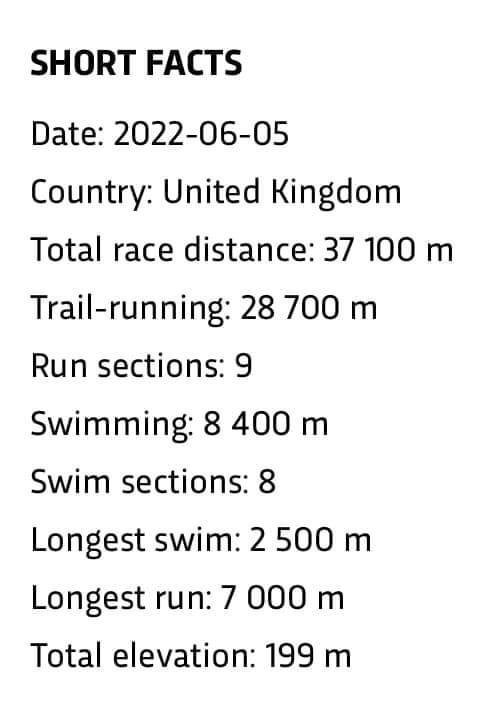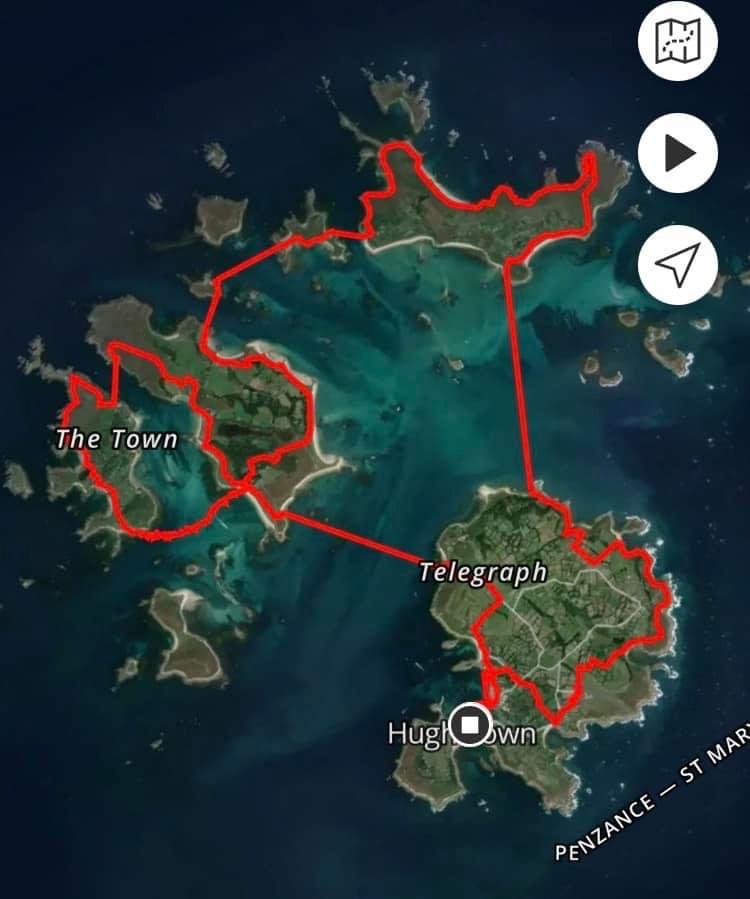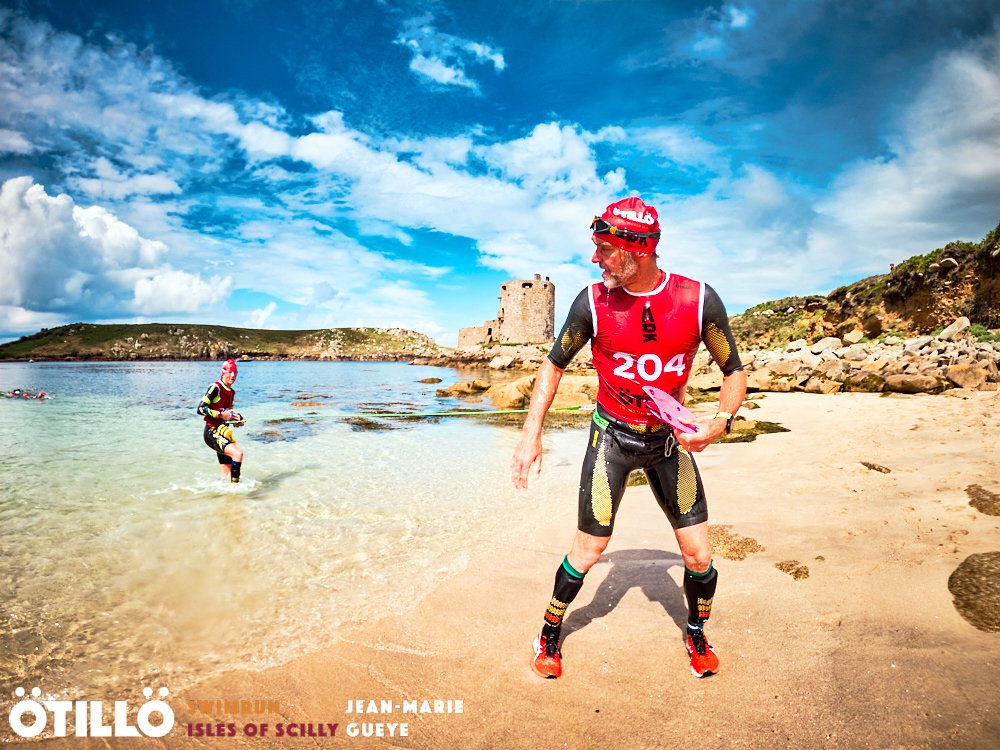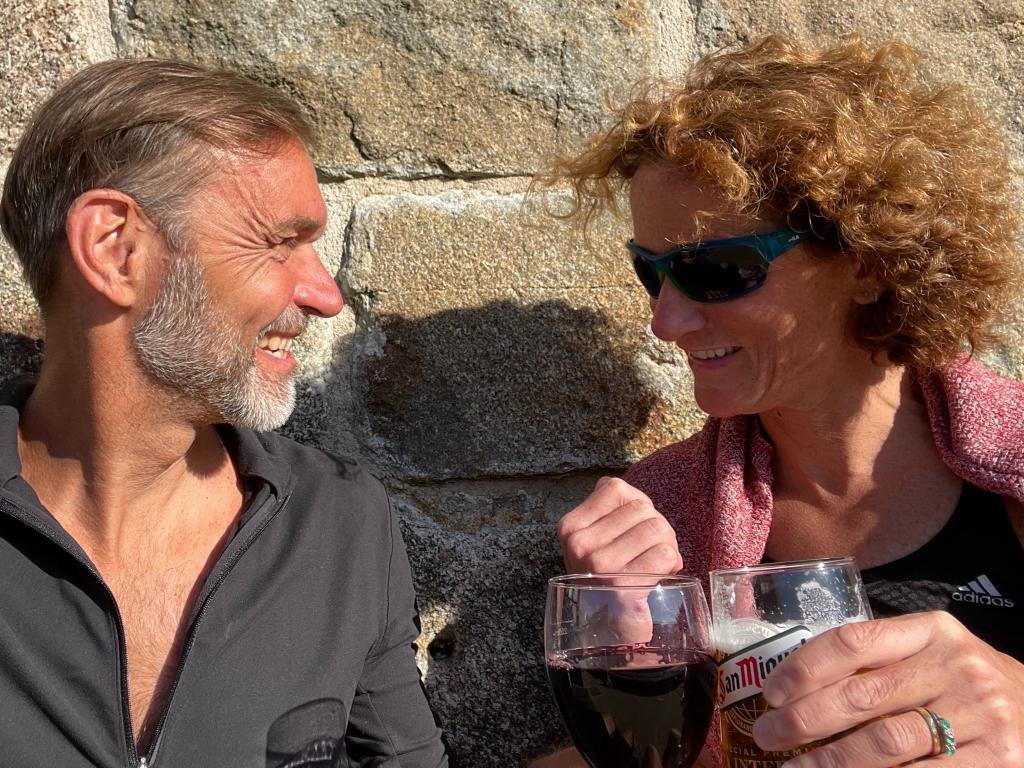Ötillö Isles of Scilly
Note: if you don’t know anything about Swimrun and want to know more, you should start here: First Swimrun in Hong Kong
In late 2014, my friend Bruce and me pushed the envelope of our swimming endurance with a 5-day 80k swim of Lantau island, the largest island in Hong Kong (Lantau Island 80k Swim)
After this crazy undertaking, we were looking for a new challenge to do, something different. Another friend of mine, also named Olivier, co-organized with me the first Swimrun in Hong Kong (First Swimrun in Hong Kong) and I participated in the first Swimrun in Thailand with triathlon coach Jürgen Zäck (First Swimrun in Thailand).
So it’s almost naturally that we turned to Swimrun for our next challenge. We were soon joined by two other friends, Colin and Scott, also strong swimmers, runners and triathletes. We signed up for Ötillö Swimrun Isles of Scilly in late 2015, to race in July 2016.
Six years have passed. None of us made it in July 2016, due to work and/or injuries. I ended up racing Ötillö Engadin (Switzerland) in 2017 with yet another friend and fellow triathlete, Siegfried, and I raced Ötillö Hvar (Croatia) with Bruce in 2018. But I don’t like unfinished business, I REALLY don’t. So when I realised that our family would move to the UK, I soon contacted Scott, whose family lives not far from the Isles of Scilly, to partner with me for Ötillö Isles of Scilly 2022. However, this time again, Scott couldn’t make it due to work constraints. So I started to franticly look for a new partner in March this year, only 3 months before the race.
Thanks to my discovery of Tooting Bec Lido, an incredible outdoor unheated pool in the South West London area and resident of the club South London Swimming Club, it didn’t take too long until I met a new Swimrun partner: Patricia Mountain, who had done more Ötillö races than me and many more lesser known Swimrun races, but equally challenging.
Tooting Bec Lido 100 yards pool, a sanctuary for cold water swimmers, and a few ‘regular’ endurance athletes too
We both increased our training, but not like for an Ironman (Patricia is also a multiple Ironman finisher, including the super hard Lanzarote one that I still have to do one day). If I were to summarise my KEY sessions, they would be:
For the swim:
3x5k swims over 3 days, time trial efforts for the Swimathon, the largest charity swim in the UK, where I finished 6th ranked nationally (OK, only a few did that distance, but among those few some are dolphins) (IG Triple swim)
For the run:
Paris Marathon
A 10k trail race
Combined sessions:
Transitions training with Patricia at Shepperton lake,
Transition training with Patricia at Tooting Bec Lido
Last Swimrun training before Ötillö Scilly Islands race
Tooting Bec Lido Aquathlon race 1k swim-7.2k run,
Triple short Swim Run repeats solo at Shepperton,
A couple of Swim Run solos at Tooting Bec Lido.
These are the Swimrun specific sessions. I kept swimming 4k+ indoor sessions, riding 3 days a week including coached sessions on Zwift (Beyond The Line Zwift Coaching, Beyond The Line Zwift Official Events) and running 3 times a week, being very careful not to injure myself again (recurrent hamstring weakness) so keeping the volume and intensity lower than I would normally when I’m in race preparation mode.
Beyond The Line - Virtual ZWIFT Rides
In terms of gear, we’re both relatively seasoned Swimrunners, but we did make some late adjustments:
changing my belt and tether and replacing it by a sturdier version owned by Patricia,
getting rid of my Hoka trail shoes. I thought Hoka were a good idea, but I feel clumsy when I wear them because of their huge sole: I am now using regular Asics road running shoes,
after several trials, I discovered that I’d rather not use a pullbuoy as the huge floaty calf guards I got from Colting wetsuit provide enough buoyancy.
What I didn’t do though, and I will do it, is to do time trials with and without pull buoys to make sure it was indeed the best decision. The thing is: the least amount of items I carry the better I feel, the least things I have to think about in transition the better I perform.
The Isles of Scilly are pretty much one of the most remote places you can go to in England. They are off the south-west tip of England, in the Atlantic. It looks like the Caribbean but with old English gardens. In total there are 140 islands of which only five are inhabited.
The race starts on St Mary’s island, we run 3k to spread the field, swim 2k to St Martin’s island, run a bit, swim 1.4k to Tresco island, run 7k, etc etc etc… The total race is made of 9 runs and 8 swims, for a total of 8.4k of swimming (23% of total distance) and 28.7k of running.
Patricia wrote down all the key elements of the race and was providing me heads-up on how long the next leg would be, when the next aid station would be, etc.
The swims can be very rough but the weather Gods were on our side for the World series race, the long distance one we did. The day before though, the athletes taking part in the Experience and Sprint races had to contend with much worse, with a bit of rain, wind and fog. The real difficulty with the swims is the sheer volume of it, the temperature (13.1 degrees water) and the seaweed. Seaweed is everywhere and we often got stuck in it. At one point, when we got out of water, we had to remove kilos of the stuff that got stuck around the tether. I swam with seaweed around my arms several times, sometimes for minutes as I didn’t want to stop to remove them: the problem when you stop and you’re tethered to someone is that the partner also has to stop and wonders what on Earth is going on. As communication in the water is never easy, I decided to keep swimming.
Yesss, out of the water, no more algae… but in 10min we’ll be like “when do we swim, it’s hot on the run!”
The runs are on trails. Some portions of these trails are barely run-able, with rocks and even boulders, but most of the time they are OK. We hadn’t planned to be tethered on the run, but early in the race I realised that I was going faster than Patricia. I kept looking behind to check if Patricia was still close. She rightly told me not to look back as I would end up tripping on some rock. So I decided to use the tether also on the run.
That was a great decision. Thanks to the amount of tension in it, I could tell when Patricia was doing fine and when she wasn’t. The tether became a fantastic communication tool, we didn’t have to talk or look at each other. Equally, we saved minutes overall without having to faff and untether with cold fingers and retether with sweaty ones. To be repeated for sure.
Ready Patricia? Let’s run!
The water was cold-ish, but for me who swam half of winter in ‘skins’ at Tooting Bec Lido, sometimes under 5 degrees (First Cold Water Swimming Experience), I became accustomed to much much worse and got stronger. Patricia is in fact 100 times more seasoned than me in that respect, but with even less body fat than me, she remains more sensitive than me to the cold. As a result she wore a neoprene vest under her swimrun wetsuit. She didn’t suffer too much from the cold during the race.
But the beauty and difficulty of Swimrun is that whatever you wear swimming, you have to wear running. We race wearing tight bib numbers, so removing the bib and the wetsuit takes too much time, especially given that no run is longer than 7k-ish. Losing 2 minutes here and there is not something we could afford, given that we were battling for the best mixed team ranking we could get.
As a result, Patricia was really cooking on the run at some point. That’s when the aid stations are key. And they were perfect. After the longer swims they were offering hot ginger and fruit cake full of calories to make us feel warmer and stronger, and on the runs they were providing cold water and less filing food. You don’t really have to carry your nutrition nor drink on Ötillö races because my experience of aid stations has always been top notch, but if you are worried you can always carry gels in your wetsuit or race belt. I personally carried 3 Maurten gels, but only used one, and could have done without it.
Around mid-course we pretty much knew who we would be fighting against until the end. The only passes that happen at this time is when someone collapses, bonks, has GI issues, a heatstroke, hypothermia, an injury… classic stuff that can happen. We did pass another mixed team that looked in disarray, but got passed by a team half our age as if we were walking. They skipped an aid station in front of us, which I thought at the time would be a mistake, but it wasn’t, they kept hammering and beat us square and fair. We had our own issues too, a bit of overheating issue, a bit of GI issue too, but overall we always kept moving, which is the key.
When things go wrong, what goes into your mind is: when you run: ‘I can’t wait to be swimming’, and when you swim: ‘I can’t wait to be running’. We all go through these mind games, at every level, in every race, I suppose. At least the constant change of sports gives us a respite, unlike a marathon where, if it starts hurting, you know it is very likely to hurt until the end! I’m cold, I’m hot, my legs hurt, my shoulders hurt, this seaweed sucks, these rocks suck… being comfortable is definitely not part of the program in Swimrun.
Before the race, everybody was talking about the last swim, a potentially choppy affair of 2.5k, sandwiched between two 7k trail runs. I had my sight on it, thinking that I would make a move against my competition at that moment. I did, but the few teams we passed were not in our category (female and male teams).
Still, when we crossed the finish line, we had the wonderful feeling of having given it everything we had. Patricia hit some rough patches, I didn’t but I was pushing non stop for almost 6 hours. It’s a wonderful feeling to finish with nothing left in the tank, but without going through a tremendous amount of pain either.
Before and after: still friends, amazing!
Ötillö Engadin was much more painful for various reasons. The race is perched in the Swiss mountains and the running up and down the mountains is brutal. My running shape at the time was terrible as I was struggling with severe inflammation issues that prevented me from running. All I could do for months was swim training, so I raced well prepared on the swim, but dragged my ass behind run rocket Siegfried on the climbs. Ötillö Croatia, probably the most beautiful of the 3 Ötillös I did, wasn’t an easy day either. This time it was my partner Bruce who was lagging behind, as he had not fully recovered from a severe cold prior to race day. So this is it, the beautiful and painful truth at the same time: this is a team event, and you have to find the right partner and hope that he/she will be in top shape on race day, on top of hoping for the same for yourself! Note that, since this year, it is possible to race solo if you wish to.
I guess the usual question is: what’s next? Well, racing season is in full swing in the Northern atmosphere and I have lined up triathlons, aquathlons, cyclosportives, open water swimming races, running races, relays, and of course Swimrun coming up. With the Ötillö brand, you pretty much know what you’re getting: high quality races, super well organised, paradisiac places, family-like atmosphere, direct contact with the organisers Michael Lemmel and Mats Skots if you wish to -as they really treat you with a lot of respect and kindness.
ÖTILLÖ Swimrun Isles of Scilly 2022
The idea is to race more of these, but I also want to give a chance to the other organisers who fight for developing the sport. Some got badly hit by the Covid era and may not come back. All suffered and need our participation. The sport is taking time to grow but provides an incredible experience. I have no doubt it will grow bigger. Ask me any question about Swimrun if you want to know more and I’d be happy to share the love of it!
Olivier Baillet @Beyond The Line











